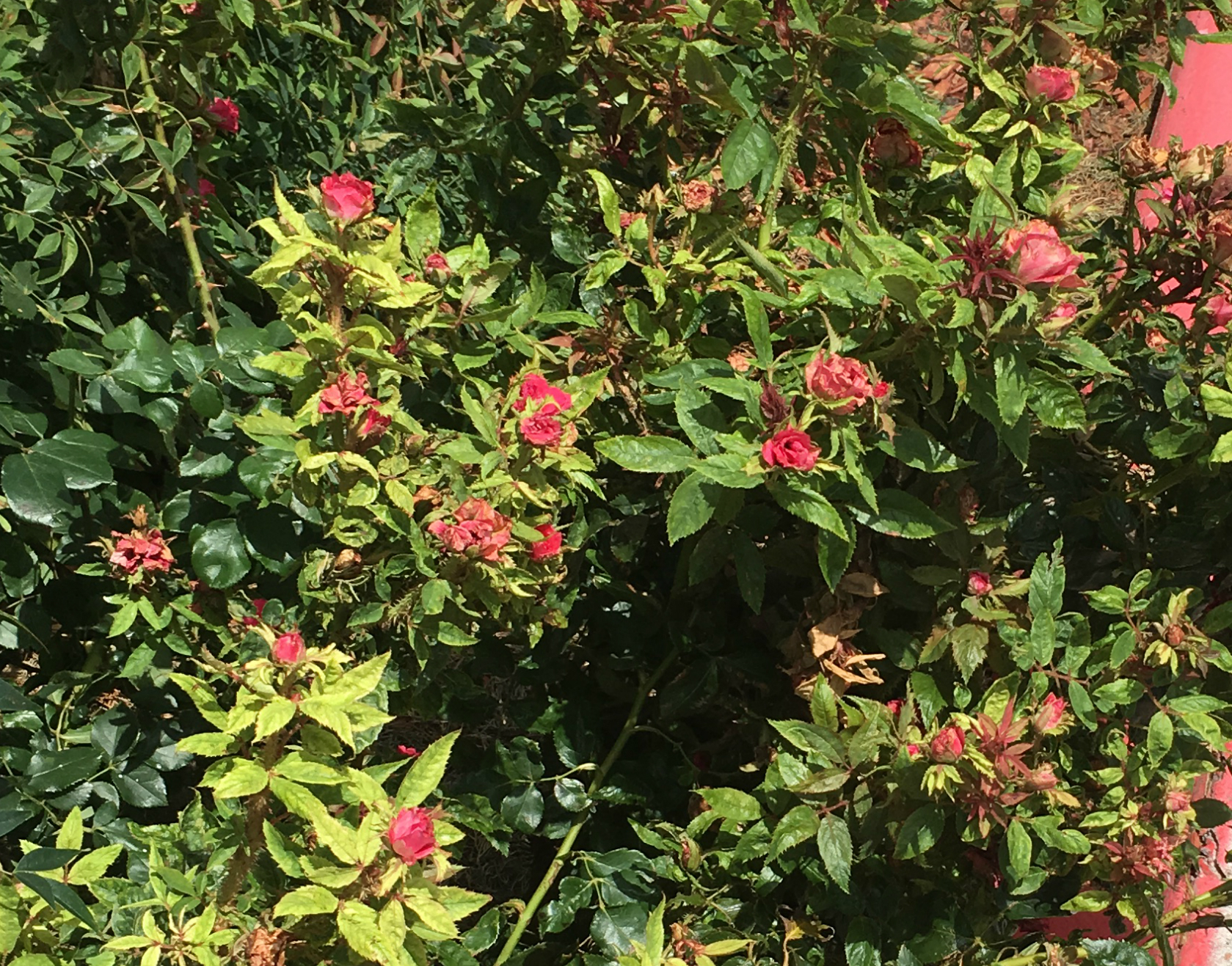Farm & Ranch
[AgriLife Today] National experts to convene in Texas for rose rosette disease meeting

By: Kathleen Phillips
Writer: Kathleen Phillips, 979-845-2872, [email protected]
Contacts: Dr. Kevin Ong, 979-845-8032, [email protected]
Dr. David Byrne, 979-862-3072, [email protected]
CELINA — Rose rosette disease – what it is and how experts are dealing with it – will be the topic of a meeting Nov. 12 at Chambersville Tree Farms, 7032 County Road 971, Celina.
The event will be 8:30 a.m.-12:30 p.m. and is free to the public, according to Dr. Kevin Ong, director of the Texas A&M AgriLife Extension Service’s Plant Disease Diagnostic Lab in College Station.
Rose rosette is a fatal viral disease spread by mites onto rose bushes. The disease leads to excessive thorn production, leaf distortion and excessive stem development, known as witches broom, at the ends of branches, according to Dr. Michael Merchant, AgriLife Extension entomologist in Dallas. An introduction to the disease will be presented by Maddi Shires, a plant pathology doctoral student at Texas A&M University in College Station. Dr. Greg Church, AgriLife Extension horticulture agent in Collin County, will talk about the status of the disease there.
Dr. Jim Amrine, professor emeritus of entomology at West Virginia University, will discuss points to remember about the spread of the disease in roses. Dr. Mark Windham, distinguished professor of ornamental pathology at the University of Tennessee’s Institute of Agriculture, will talk about proactive management strategies to combat the disease.
The challenges of breeding rose rosette-resistant roses will be the topic for Dr. David Byrne, professor and Basye Endowed Chair in Rose Genetics at Texas A&M University. Ong will conclude the event with a discussion on how the diagnostic lab can assist in finding rose rosette disease-resistant or -tolerant rose varieties.
For more information, contact Ong at 979-845-8032, [email protected].
-30-
Find more stories, photos, videos and audio at http://today.agrilife.org
Farm & Ranch
Acorn Toxicity

By Barry Whitworth, DVM, MPH
With the prolonged drought, most pastures in Oklahoma end up in poor condition. With the lack of available forage, animals may go in search of alternative foods.
If oak trees are in the pastures, acorns may be a favorite meal for some livestock in the fall. This may result in oak poisoning.
Oak leaves, twigs, buds, and acorns may be toxic to some animals when consumed.
To read more, pick up a copy of the November edition of North Texas Farm & Ranch magazine, available digitally and in print. To subscribe by mail, call 940-872-5922.

Farm & Ranch
Silver Bluestems

By: Tony Dean
There are a handful of grasses on North Texas grazing lands ranchers need to know, not because they are highly desirable, but rather because they are not of much value. I call them “decom” plants, which is am acronym for “Don’t Ever Count On Me.” Silver bluestem is a “decom” grass.
Silver bluestem is a perennial which grows in all areas of Texas. It can survive in almost all soil types, and in full sun conditions or in semi shade. It grows up to three feet tall and is easily recognized with the presence of the white fuzzy seed head. Also, one of the identifying characteristics of Silver bluestem is a bend in the stems at each node, causing the plants to take on a rounded shape as they mature.
To read more, pick up a copy of the November edition of North Texas Farm & Ranch magazine, available digitally and in print. To subscribe by mail, call 940-872-5922.

Farm & Ranch
Meanwhile Back At The Ranch

By: Rayford Pullen
Fall is here which means winter is closing in on us and before we officially get into winter, we need to make sure our factories are either producing or will be producing in a few months.
We have been pregnancy testing our cows this fall and if they are not bred or nursing a calf, we are bidding them adios. With annual costs somewhere between $900.00 and $1,000.00 per cow, those cows not producing a live weaned calf are costing us quite a bit.
To read more, pick up a copy of the November edition of North Texas Farm & Ranch magazine, available digitally and in print. To subscribe by mail, call 940-872-5922.
-

 Country Lifestyles2 years ago
Country Lifestyles2 years agoScott & Stacey Schumacher: A Growth Mindset
-

 Country Lifestyles8 years ago
Country Lifestyles8 years agoStyle Your Profile – What your style cowboy hat says about you and new trends in 2017
-

 HOME8 years ago
HOME8 years agoGrazing North Texas – Wilman Lovegrass
-

 Equine1 year ago
Equine1 year agoThe Will to Win
-

 Country Lifestyles5 years ago
Country Lifestyles5 years agoAmber Crawford, Breakaway Roper
-

 Outdoor9 years ago
Outdoor9 years agoButtercup or Primrose?
-

 Country Lifestyles8 years ago
Country Lifestyles8 years agoJune 2016 Profile – The man behind the mic: Bob Tallman
-

 Country Lifestyles8 years ago
Country Lifestyles8 years agoDecember 2016 Profile, Rusty Riddle – The Riddle Way




